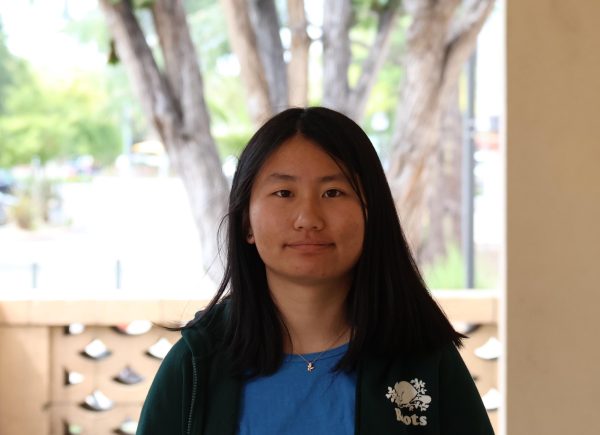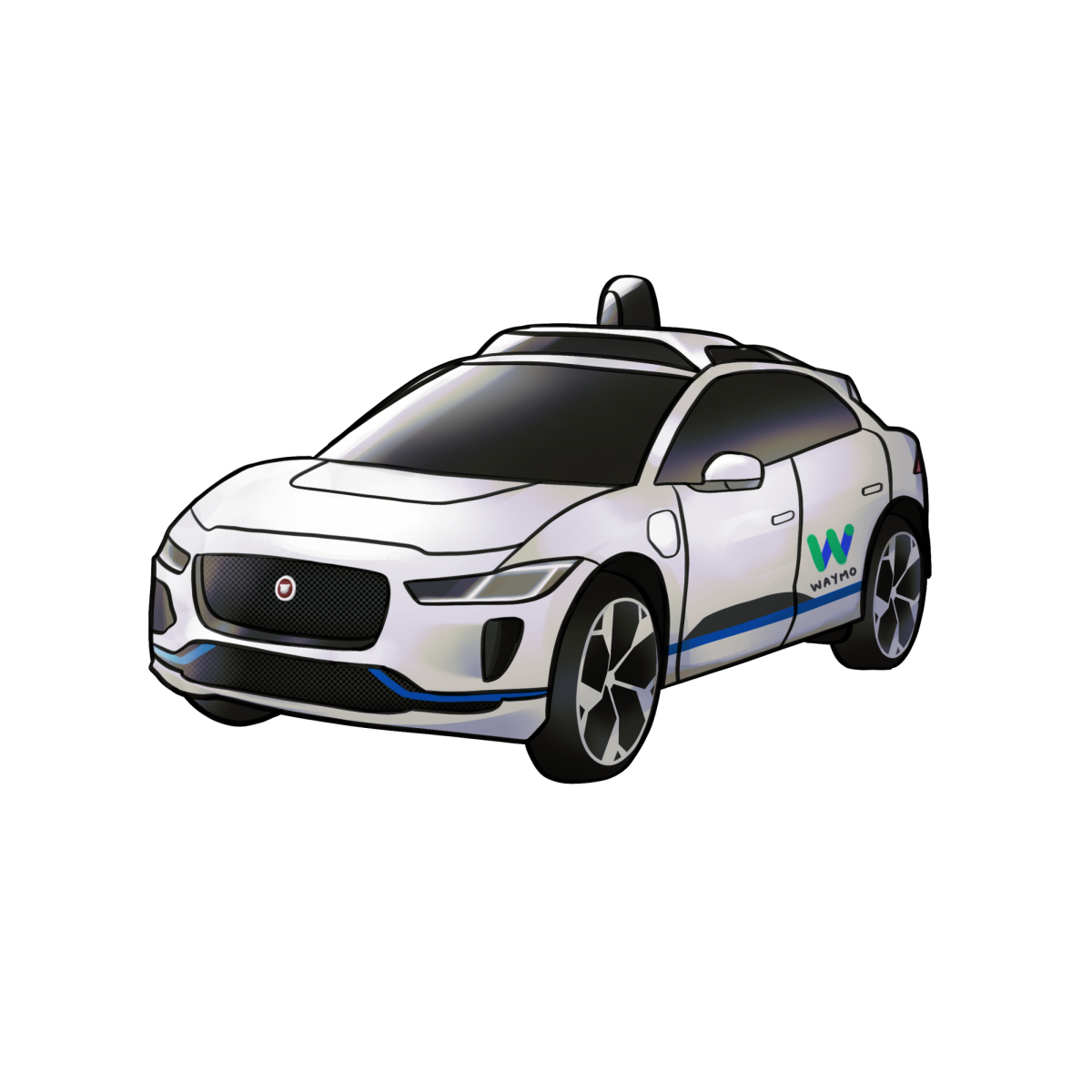Junior Angelika Gera watched as her ride pulled up beside the sidewalk. It looked like a fairly normal car, except for the cameras on its side and the cylinder at the top of its head. That is a Waymo taxi, one of many in San Francisco.
“It was my first time, and I wasn’t expecting it to drive that well,” Gera said. “I would say it was very, very precise (and) pretty fast.”
Self-driving car company Waymo launched its self-driving taxi service last year, operating in Los Angeles, Phoenix and San Francisco, where its cars now roam city streets.
According to a Waymo Director of Product Management and former Paly graduate Chris Ludwick, Waymo cars use a navigation process called Sense, Solve, Go, where sensors and cameras on the cars process surroundings using artificial intelligence.
“We have many different systems and algorithms that process that information in different ways to make it usable by the downstream system. Think of it as the decision system,” Ludwick said.
Senior Marco Li said his experience with Waymo was successful despite minor inconveniences.
“I noticed that Waymo’s AI system tries to make tiny adjustments to the (route) every other second,” Li said. “It makes the ride feel a little bumpy because the car constantly calibrates its path left and right.”
This occurs because, according to Gera, the routes are pre-planned.
“(You) log in, sign in and tell the car where you want to go beforehand,” Gera said. “You can see what route you’re going on the screen in front,”
Ludwick explained a simplified version of how the AI works.
“You’re collecting data from your sensors, and you have to make lots and lots of complicated decisions. But at the end, there’s really only three outputs: What is your steering wheel doing? What is your brake doing? What is your accelerator doing? This entire thing is trying to create a trajectory of those three outputs that actually gets you to your destination safely and efficiently,” Ludwick said.
Li said Waymo cars also show nearby cars and pedestrians, making him feel safe during his ride.
“The car brakes suddenly when it detects pedestrians,” Li said. “The deceleration I feel from braking is quite constant. I actually trust Waymo more than at least 80% of human drivers. There was this funny moment when a human driver honked at our Waymo from behind. It made me realize no matter how perfectly a car drives, human drivers will still find a reason to honk.”
With all these features, Gera said the car was faster than she expected.
“It was searching for opportunities to get to a point faster,” Gera said. “To get to things like red lights … it was sometimes trying to cut the cars to go faster.”
However, in his car, senior Nathan Jiang said such abrupt maneuvers were rare.
“It generally felt pretty conservative at stop signs, but it did surprise me with a couple of more aggressive moves,” Jiang said.
Despite common safety concerns, Jiang said he was not worried.
“It handled the road pretty smoothly, and I generally felt quite safe and comfortable in the car,” Jiang said.
Overall, Gera said the experience was memorable.
“I would really recommend driving a Waymo at least once,” Gera said. “I would say it was a nice experience but very scary.”
Ludwick said Waymo was looking to expand in other markets.
“Over the years, we’ve expanded through multiple markets, and at this point in time, we’re live in Phoenix, San Francisco, Los Angeles and Austin, and we’ve tested in many other cities as well,” Ludwick said. “We’re looking for the best intersection of commercial opportunity, so bigger, denser cities where there tends to be more market opportunity.”
Waymo’s self-driving taxis gain popularity, optimize safety using AI
Story continues below advertisement
0
Donate to The Campanile
$250
$1000
Contributed
Our Goal
Your donation will support the student journalists of Palo Alto High School's newspaper
About the Contributor

Lea Kwan, Staff Writer



